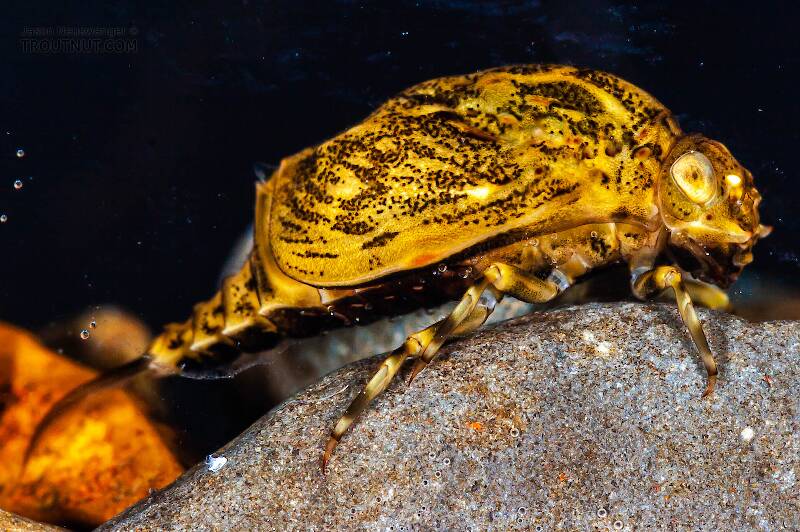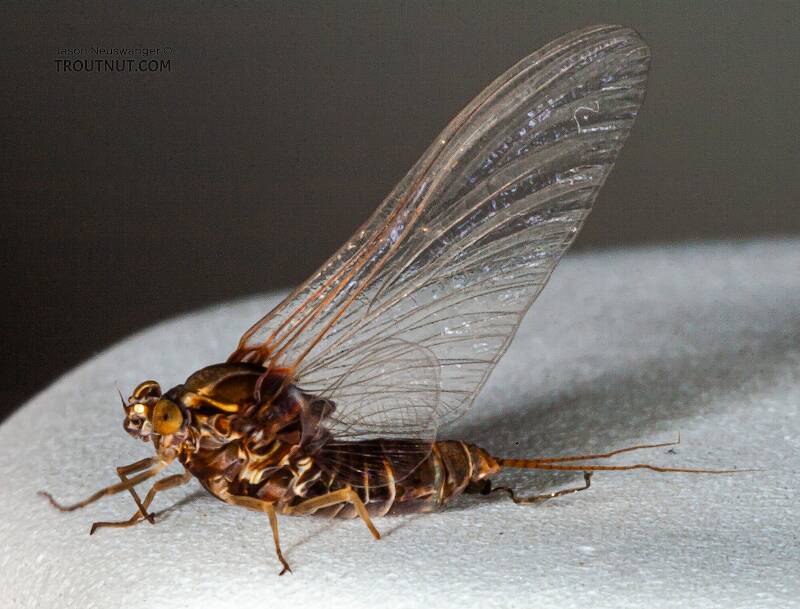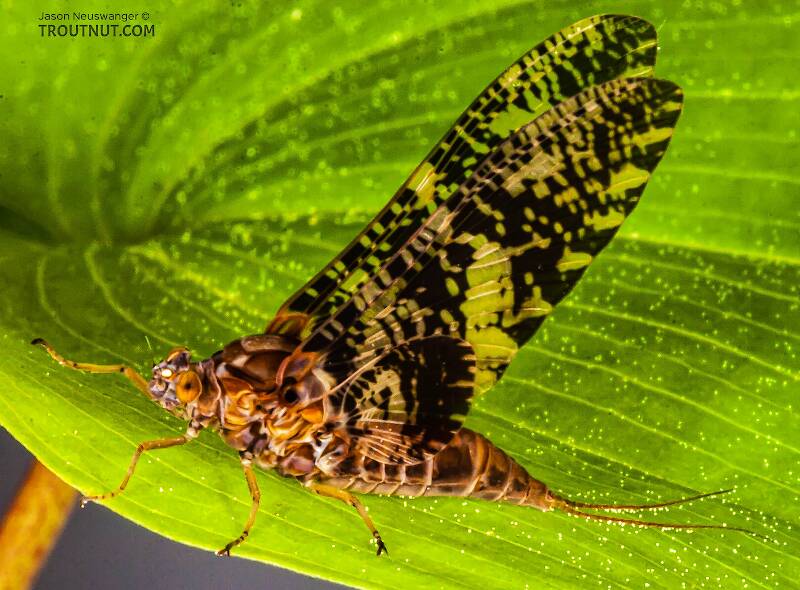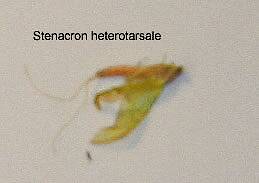
Hex Mayflies
Hexagenia limbata
The famous nocturnal Hex hatch of the Midwest (and a few other lucky locations) stirs to the surface mythically large brown trout that only touch streamers for the rest of the year.
Featured on the forum

As far as I can tell, this species has only previously been reported from one site in Oregon along the Columbia gorge. However, the key characteristics are fairly unmistakable in all except for one minor detail:
— 4 small yellow spots on frons visible in photos
— Narrow occipital spinule row curves forward (but doesn’t quite meet on stem of ecdysial suture, as it's supposed to in this species)
— Short spinules on anterior margin of front legs
— Short rposterior row of blunt spinules on abdominal tergae, rather than elongated spinules dorsally
I caught several of these mature nymphs in the fishless, tiny headwaters of a creek high in the Wenatchee Mountains.
— 4 small yellow spots on frons visible in photos
— Narrow occipital spinule row curves forward (but doesn’t quite meet on stem of ecdysial suture, as it's supposed to in this species)
— Short spinules on anterior margin of front legs
— Short rposterior row of blunt spinules on abdominal tergae, rather than elongated spinules dorsally
I caught several of these mature nymphs in the fishless, tiny headwaters of a creek high in the Wenatchee Mountains.

Troutnut is a project started in 2003 by salmonid ecologist Jason "Troutnut" Neuswanger to help anglers and
fly tyers unabashedly embrace the entomological side of the sport. Learn more about Troutnut or
support the project for an enhanced experience here.
This topic is about the Mayfly Genus Baetisca
These mayflies are a sleeper hatch which has barely received a nod in the fly fishing literature. Their abundance never matches that of the classic superhatches, but they can be important on some waters. The taxonomic common name for this family and genus is Armored Mayfly but angler reports often refer to them as Humpback Nymphs and the adults as Speckled Duns or Batflies.Their primary claim to fame is their peculiar shape, both as nymphs and as adults. On most rivers they are a rare oddity, but there are places where their spinner falls elicit greedy rises and staunch selectivity from the trout. These spinners never even come close to blanketing the water, but trout have such an affinity for them that even their sparsest falls should excite the angler.
I favor two explanations for their importance. First, they have a very stout profile, and late-season beetle action suggests that trout like this trait. Second, the Baetisca action lasts for up to a month on a single stretch of water. This caters to the selective trout's love of the familiar.
Example specimens
BRAT
Posts: 10
Posts: 10
BRAT on Oct 25, 2009October 25th, 2009, 8:46 am EDT
Hi there; I just gathered a sample from our local Black River here in SE Vermont, and found a thriving population of armored mayflies. Wasn't sure what they were at first, with their bubble-humped backs and short little tails, but once I used my hand lens I realized they have tiny little "thorns" behind their last legs. Their mottled coloring resembles everything I've seen here, confirming my ID. I'll be sending off a sample to a friendly bug lab to let the pros look at them.
Taxon on Oct 25, 2009October 25th, 2009, 8:54 am EDT
BRAT-
There are (11) species of Baetisca in N. America. Yours would likely be Baetisca rubescens if found in VT.
There are (11) species of Baetisca in N. America. Yours would likely be Baetisca rubescens if found in VT.
Quick Reply
Related Discussions
Topic
Replies
Last Reply
0
Jun 12, 2006
by Troutnut
by Troutnut







